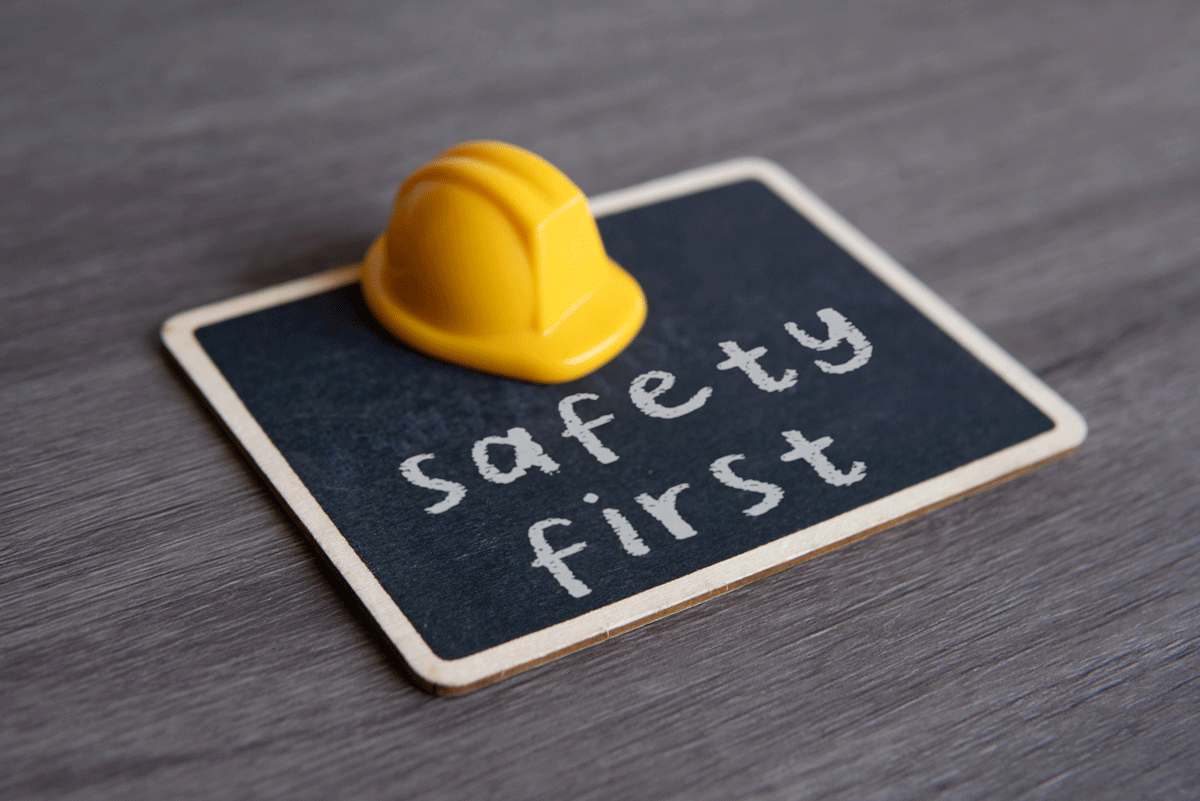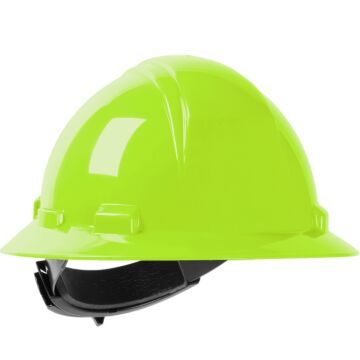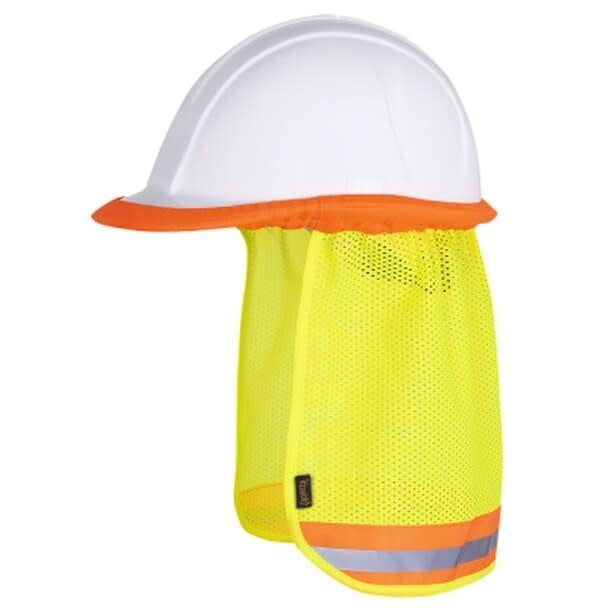Blog

Hard Hats Safety Equipment: Choosing the Right Protection for the Job
Introduction: Why Hard Hats Still Matter on Every Job Site
Whether you work in construction, manufacturing, or any high-risk environment, hard hats safety equipment is one of the most important tools for protecting your team. A properly fitted hard hat can prevent serious head injuries from falling objects, low-hanging hazards, and even electrical contact. Despite their simple design, hard hats play a major role in keeping workers safe every single day.
But not all hard hats are the same. Choosing the right one means understanding the different classes, materials, and safety standards that apply to your job site. It also means knowing when to inspect or replace your gear so it continues to offer full protection.
In this blog, we will guide you through everything you need to know about hard hats as safety equipment. You will learn about the key types of hard hats, what features to look for, how to meet Canadian safety standards, and when it is time to upgrade your gear.
Whether you are buying for yourself or a whole team, this guide will help you make smart, informed decisions that put safety first.
Understanding the Role of Hard Hats in Workplace Safety
Hard hats do more than just complete a safety uniform. They are a critical piece of personal protective equipment designed to protect workers from life-threatening injuries. On busy job sites, accidents can happen without warning. A tool might fall, a structure might shift, or a worker might bump into an overhead object. In each of these situations, a hard hat can make the difference between a minor scare and a serious injury.
Hard hats are built to absorb the shock of impact and protect the skull from fractures. Many also offer protection against electrical hazards and side impacts, depending on the type. For workers in construction, industrial settings, utilities, and even landscaping, head protection is essential.
It is also important to understand that safety gear is not one-size-fits-all. Wearing the right hard hat for your job and environment is key to staying safe. Just like gloves or boots, different situations call for different designs and features.
By making head protection a priority, employers and workers show a shared commitment to safety. It is not just about checking a box. It is about keeping people safe and making sure everyone goes home at the end of the day.
Different Types of Hard Hats and Their Uses
Not all hard hats are the same. Different jobs and environments require different levels of protection. Understanding the types available will help you choose the right one for your team or project.
Class G – General Use
Class G hard hats are designed for general use. They protect against impact and offer limited electrical protection up to 2,200 volts. These are commonly used in construction and manufacturing.
Class E – Electrical Work
Class E hard hats are made for high-voltage environments. They provide protection against electrical hazards up to 20,000 volts, making them ideal for utility and electrical workers.
Class C – Comfort and Ventilation
Class C hard hats are lightweight and well-ventilated but do not provide electrical protection. They are best suited for work environments where impact protection is needed but electrical hazards are not a concern.

Choosing the Right Hard Hats Safety Equipment
When selecting hard hats safety equipment, consider your job site hazards, weather conditions, and the type of work being performed. Picking the correct class ensures proper protection and long-term safety for every worker.
How to Choose the Right Hard Hat for Your Job
Choosing the right hard hat is about more than picking a color or size. The right fit and features can make a big difference in comfort, protection, and performance on the job.
Start by identifying the hazards in your work environment. If there is a risk of electrical exposure, a Class E hard hat is likely required. For general construction, Class G is often the standard. For lower-risk tasks that need ventilation and comfort, Class C may be enough.
Next, consider the suspension system inside the hard hat. There are two common types:
- 4-point suspension, which spreads impact over four areas for comfort
- 6-point suspension, which offers better shock absorption and stability
You’ll also want to check for features like:
- Adjustable headbands for a secure fit
- Sweatbands or liners for comfort in hot conditions
- Slots for face shields or earmuffs if extra protection is needed
Lastly, make sure the hard hat meets CSA or ANSI standards. Look for certification markings inside the shell.
A hard hat that fits well, suits the task, and meets safety standards is a key part of staying protected every day.
Hard Hats Safety Equipment Standards in Canada
In Canada, not just any hard hat will do. Safety equipment must meet strict standards set by organizations like the Canadian Standards Association (CSA) and the American National Standards Institute (ANSI). These standards make sure that hard hats are tested for impact, penetration, and in some cases, electrical insulation.
For Canadian workplaces, CSA Standard Z94.1 is the key reference. It outlines requirements for hard hat performance, marking, and classification. Employers are responsible for ensuring that all head protection worn on site meets these standards. Workers should also be aware of what markings to look for inside the shell, including class type and approval numbers.
Wearing certified gear is not just about compliance. It is about trust. You want to know that your safety equipment will do its job when it matters most.
Following proper equipment standards goes hand in hand with reporting unsafe conditions or incidents. For more on that, check out our related blog post: “The Ultimate Guide to Incident Reporting That Improves Safety.“ It explains how reporting and prevention work together to keep job sites safer.
By choosing certified hard hats, you help create a culture where safety is consistent, respected, and built to last.
When to Replace or Inspect Your Hard Hat
Hard hats do not last forever. Just like any other piece of safety equipment, they need regular inspection and timely replacement to stay effective. Even if your hard hat looks fine on the outside, damage can occur over time from sun exposure, impact, or daily wear.
To keep your gear in top condition, follow a simple routine for checking your hard hat.
Here’s what to look for during inspections:
- Cracks or dents in the shell, even small ones
- Fading or discoloration caused by UV exposure
- Brittle or dry spots that indicate material breakdown
- Worn or damaged suspension straps
- Loose or missing parts like headbands or adjustment knobs
When should you replace a hard hat?
- After any major impact, even if no damage is visible
- If the shell or suspension system is over 5 years old
- If the manufacturer’s expiry date has passed
- When it no longer fits securely or comfortably
Inspecting your hard hat regularly and replacing it when needed ensures you always have full protection when it counts. It is a simple habit that supports long-term safety.


Conclusion: Smart Choices Lead to Safer Workplaces
Investing in the right hard hats safety equipment is one of the simplest yet most powerful ways to improve safety on your job site. Whether you’re a business owner, safety manager, or worker, knowing how to choose, inspect, and replace the right head protection can prevent serious injuries and even save lives.
In this blog, we covered the key types of hard hats, how they protect against specific hazards, and what to look for when buying one. We also discussed Canadian safety standards, the importance of proper fit and features, and how to know when it’s time to upgrade your gear.
When safety becomes part of your everyday decision-making, it creates a workplace culture built on trust, care, and responsibility.
Need help finding certified hard hats or other essential safety gear?
Visit Safety Chicks today to shop trusted hard hats safety equipment that meet Canadian standards and keep your crew protected.
Because smart protection is always the best plan.
FAQs
1. What is the lifespan of a hard hat in Canada?
Most hard hats should be replaced every 3 to 5 years, depending on manufacturer guidelines and wear. The suspension system may need to be replaced more frequently.
2. How do I know if my hard hat meets Canadian safety standards?
Look for CSA Standard Z94.1 markings inside the shell. This confirms the hard hat is tested and approved for use in Canada.
3. Can I wear a hard hat backwards?
Only if it is marked and approved for reverse wear. Always check manufacturer instructions before doing so.
4. What class of hard hat should I use for electrical work?
Class E hard hats are designed to protect against high-voltage electrical hazards up to 20,000 volts.
About the Author
Safety Chicks is a women-led safety education team based in Manitoba, committed to creating safer workplaces across Canada. With years of hands-on experience in occupational health and safety, our mission is to make safety training accessible, engaging, and easy to understand. We specialize in delivering certified safety training courses in Manitoba for businesses of all sizes from construction crews to office teams. At Safety Chicks, we believe safety is more than a requirement, it’s a culture.Learn more about our programs at safetychicks.ca or reach out to us directly for tailored training solutions.
Website: https://safetychicks.ca/
Phone: +12047277233
Email: safetychicks@mymts.net



